A Guide to the Omnichain Future

Introduction:
In the DeFi summer of 2020, we saw the meteoric rise of decentralised finance (DeFi). Ethereum was the undisputed dominant network for DeFi, with the lion’s share of users and capital. Ethereum’s ecosystem was filled with dozens of novel decentralised finance applications (dApps) that captured billions of dollars in liquidity with hordes of users. This euphoric period wasn’t all rainbows and 1000X’s however – gas costs on Ethereum skyrocketed, and transaction finality slowed to a crawl of several minutes. With these prohibitively high gas costs reaching hundreds of US dollars just to complete a simple token swap, we saw solutions quickly emerge to give users who were economically barred from interacting with the exploding DeFi space a home.
A case in point was new blockchains – namely the centralised Geth fork by leading exchange, Binance, Binance Smart Chain, with its near-free gas costs and lightning-quick transaction finality. BSC wasn’t Ethereum’s only contender, there also was the Ethereum side-chain Polygon, and a promise of Layer-2 Rollups. These new leaner networks quickly snatched large swaths of market share from Ethereum’s once dominant grasp – Ethereum’s control of total DeFi TVL dropped from 95% in 2020 to 50% in 2021. Many more novel networks were released to great fanfare with Fantom, Solana, Cosmos, Avalanche, Optimism, etc. However, with one issue solved, a bigger issue was created in our now multichain world – a lack of interoperability.

Interoperability on the blockchain refers to the ability of blockchains to communicate with other blockchains. Without interoperability, users (and liquidity) are stranded on siloed islands made up of hundreds of chains – that’s undesirable! To solve this new requirement of moving capital between these chains, bridges were created to enable users to travel with their capital from chain to chain. Users wanted to move their capital to these new chains in order to interact with new and exciting ecosystems with unique feature sets.
While bridges seemed like the perfect solution to this problem, they have observably failed at offering a secure and frictionless method for users to safely and quickly transport their capital, accounting for over half of all hacks in DeFi, equaling the loss of $3.6b in 2022 alone, ouch. Bridges also remain slow, as seen in L2 <> L1 Bridges requiring users to wait for weeks or more to receive their funds back on Ethereum. Bridges also generally charge fees or introduce slippage when moving user liquidity, and commonly will issue “IOUs,” such as USDC.e on Avalanche, which silos liquidity even further.

Why does fragmented liquidity matter? When compared to traditional financial systems, DeFi has a severely siloed liquidity, which significantly lowers capital efficiency. Capital efficiency relates to the productivity of assets. In DeFi, the liquidity of USDC on Ethereum, for example, can’t be shared with the USDC liquidity on Avalanche, resulting in higher slippage, fees, and most importantly, drastically lower yields. Imagine if an asset like ETH’s liquidity could be shared between all of the chains it is present on. This would result in exponentially higher capital efficiency, and yield for users. More on this later.
The current landscape of DeFi is a multichain world that consists of hundreds of disparate blockchains that all have unique characteristics and ecosystems of dApps. The leading dApps in DeFi typically operate on one specific blockchain and are restricted to only enabling users to transact with assets native to the dApps underlying blockchain. Some dApps have tried to scale by deploying isolated versions of their codebases onto many chains, but this offers no solutions to any of the issues users face, such as liquidity fragmentation and a fractured user experience. These liquidity siloes again severely harm capital efficiency (your yields).

The backbone of DeFi has always been lending & borrowing markets such as MakerDAO, Aave, and Compound, which alone currently account for 30% ($15b) of the total TVL of DeFi ($52b). At the base level, these base layer applications serve to act as non-custodial and decentralised banking systems, an important cornerstone of DeFi. However, the issue is that these applications are generally outdated, seeing little innovation in the otherwise fast-paced DeFi ecosystem. Secondly, these mainstay applications have remained on Ethereum, or have offered siloed deployments of their codebases to “altchains”. Most importantly, they all lack interoperability. Unlocking interoperability would serve to offer exponentially better user experiences and yield streams for users! It’s a need of the hour.
Overall, very few innovations have been offered in the cornerstone sector of lending & borrowing since AAVE V1, Compound V1, and Liquity from years ago. When we did see a “second generation” of lending & borrowing released with dApps like Euler, Alchemix, Gearbox, and Abracadabra, they were able to garner massive adoption with incremental improvements. We’ve yet to see a full-scale next-gen of the DeFi money market.
When new chains emerge, usually with a rapid influx of users and liquidity, developers quickly fork these extremely outdated codebases (AAVE V1 & Compound V1) to capture the demand, which serves to create little more than dire security issues. For example, Metis had a Compound fork called Agora that lost $80m USD in a hack. Gnosis had an Aave fork called Agave that lost $11m USD. Binance Smart Chain had a fork of Compound called Venus that was hacked for $200m USD. Celo’s Moola Markets, a fork of AAVE, was hacked for $8m. Polygon’s EasyFi, a Compound fork, was hacked for $60m. Avalanche’s Blizz Finance, an AAVE fork, was hacked for $8m. Suffice to say, forking three-year-old fragile codebases is not a great practice. However, users need access to these important cornerstone dApps on new chains, and isolated multichain deployments take too much time to be properly developed onto new chains to meet the demand.
The lending & borrowing market has seen few solutions to the lacking feature sets that users want in money markets in 2023, such as access to efficient leverage, permissionless lending and borrowing, and long-tail and LP token support. Most important, however, is the need for support for cross-chain lending & borrowing opportunities.
Tokenomics Woes:
Another major issue has been the mechanisms that protocols have employed to attract users and liquidity i.e. Liquidity Mining. Liquidity Mining has shown to be effective in the short term but causes catastrophic problems shortly then after for DeFi applications looking to gain market share.
Inevitably, mercenary capital providers rent their capital to the liquidity mining dApp as long as the incentives remain valuable. The problem is when you give away something for free, its value quickly becomes “free” (zero) in kind. Once the incentives dry up in quantity, or more generally, sharply fall in value, liquidity providers leave and move to the next liquidity mining geyser, leaving the protocol economically disabled.
Generally, AAVE V1/Compound V1 forks employ even more illogical hyperinflationary liquidity mining programs to make up for their outdated functionality (as seen with Fantom’s Geist & Avalanche’s Blizz). In the case of Geist, which had $12b in TVL at one point, now has less than $100m. What did Geist gain from this liquidity mining extravaganza? Nothing. Hyperinflation as Jerome Powell knows too well doesn’t work long-term. TVL as Tapioca pointed out in its legendary “Death of Liquidity Mining” Mirror article stands for “Total Value Locked”- yet it isn’t locked, and its “value” is quite subjective. Therefore, a new economic growth model is necessary for the next-gen of DeFi protocols.

Info: https://defillama.com/protocol/geist-finance
The entire paradigm of liquidity mining puts protocols in an untenable situation of requiring a perpetual state of inflation to keep their rented liquidity. Few solutions have been proposed besides OlympusDAO’s Olympus Pro bonding programs. When looking at liquidity mining emissions as expenditures, and fees and POL as the DAO’s balance sheet, liquidity mining observably has failed.
Users of today have become wise to the illusion of “70,000% APYs” featuring yields that are totally made up of incentives, and now demand real yields. The real yield movement has seen strong adoption from users who no longer want to worry about how much of the yield they’re receiving is “fake,” or from incentives, rather than compounding the base asset that they supplied.
True cross-chain interoperability when paired with DeFi’s backbone of lending & borrowing markets, and a new tokenomics model (and decentralised omnichain stablecoin) would create:
- Wider ranges of yield opportunities on a plethora of assets – thus higher capital efficiency and in turn higher real yields – no need for fake yields made up of incentives.
- Frictionless transportation of funds from chain to chain – removing the security woes, slippage, and wait times archaic bridges offer with current stablecoins.
- A seamless experience, removing a lot of the friction that DeFi currently is defined by. Lend, leverage up, and borrow against any and all of your assets without needing a bridge in the first place.
- Sustainable growth through a full-scale revamp of the DeFi token model, which would better aligned interests of investors, liquidity providers, and the protocol itself.
This is what the omnichain future offers, and the future isn’t too far away, let’s explore!
Introducing TapiocaDAO

TapiocaDAO is the first ever omnichain money market, which is powered by LayerZero. LayerZero offers a highly customizable message-passing network that currently connects over 20 EVM & Non-EVM blockchains. Once a LayerZero endpoint is deployed, that chain can seamlessly interact with any other chain that has an endpoint. This allows entirely seamless and trust-minimised interoperability. This is achieved with no middle chain or middleware protocol.

TapiocaDAO utilises LayerZero’s message-passing network to support 20 chains and even more as endpoints are deployed, which defragments liquidity and maximises capital efficiency. Some of the chains Tapioca plans to support include: Arbitrum (as its host network), Ethereum, Optimism, Polygon, Binance Smart Chain, ZKSync, Starknet, Avalanche, Celo, Gnosis, Fantom, Aptos, Sui, Cosmos, Berachain, Solana, and many more.
How does Tapioca support so many chains? Well, to support a new chain, Tapioca only needs to deploy small proxy contracts that send and receive messages to Tapioca’s smart contracts on Arbitrum. This allows Tapioca to support hundreds of chains with little development, nor any inherent security risks. This alone is extremely innovative and gives Tapioca a huge lead on its competition in quickly supporting the newest hottest networks, but the innovation doesn’t end there.
This design creates a seamless experience for users to borrow and lend their assets from many different networks, with no more liquidity silos, more lending opportunities, and higher capital efficiency (more real yield). What’s there not to love, eh?
First, let’s take a look at a hypothetical example to get a better understanding of how Tapioca would work in practice:
Again, there are money markets spread all over DeFi – for example; there is Benqi on Avalanche, Venus on BSC, Geist on Fantom, Sonne Finance on Optimism. The funny thing is, these are all forks of Compound V1.
There are also multichain money markets like AAVE V3 that are deployed on multiple chains in singular instances per chain, meaning all of the liquidity on each of AAVE V3’s deployments are isolated from one another. Imagine if you could deposit collateral on Avalanche but borrow tokens on Fantom, or lend on Ethereum but receive a yield on your assets on a dozen chains simultaneously. Tapioca effectively connected the fractured world of DeFi, and the opportunities from this innovation are literally endless.
Not only is Tapioca the first-ever cross-chain money market, but has also created the first-ever omnichain stablecoin. Tapioca’s usd0 can mint and burn chain to chain with no slippage, wait times, etc, and is completely decentralised & censorship resistant. This means Tapioca’s usd0 is not backed by USDC and other centralised tokens.
This is very interesting from a growth standpoint as there’s been a gigantic hole in the market for truly decentralised censorship-resistant stablecoins. On the current market of “decentralised stablecoins,” FRAX is collateralised by USDC, DAI is currently collateralised heavily by fiat coins (this was the reason for the founder of Maker, Rune’s Endgame Proposal), MIM is minted through a multi-sig and has a history of onboarding poor collaterals (along with centralised tokens), and lastly, Liquity’s LUSD remains heavily siloed to Ethereum.
Most important, however, is the aforementioned fact that usd0 will be the first cross-chain stablecoin, which means your liquidity can now travel with you across chains. You don’t need to use a bridge at all. usd0 actually can mint and burn chain to chain just like transferring a token between two wallets on Ethereum. This ushers in a whole new level of composability in the very important space of stablecoins, and Tapioca effectively has filled the largest market needs with the protocol itself and usd0. Product Market Fit or “PMF” isn’t even a question here.
Lastly, one of the most interesting components of Tapioca is its totally new tokenomics model that evolves decentralised finance to an entirely new level that’s never before been seen – focusing on sustainability and the creation of POL (Protocol Owned Liquidity).

While Tapioca has a huge number of innovative features, let’s start with a section on the tokens involved.
The Tokens
The Tapioca DAO has four tokens:

$TAP acts as the backbone of the protocol. TAP can be compared to Curve’s CRV in that its true power (and juicy yields) are not unleashed till locked. TAP is not emitted at all – no liquidity mining, rewards, nothing. Therefore, TAP will have very strong value retention with this entirely new innovative token economy that requires everyone to buy in – TAP is never issued for free. TAP also has very strong utility when locked which makes it (in our opinion, which may or may not be biased) to be one of the strongest protocol tokens ever to be released, with a long-term minded inflation schedule. From Tapioca’s docs, it is likely it could take in the excess of 10 years to reach 90m TAP of the 100m total (which TAP also features a fixed supply). While the FDV or “Fully Diluted Valuation” could appear high and potentially harm its rise, we believe smart money will see the mechanics and sustainable inflation and buy-in.

twTAP is an innovative escrowed token model which utilises Tapioca’s Time Weighted Average Magnitude Lock (twAML) system and is an omnichain NFT which means, it’s transferable! The best way to explain twTAP is if users controlled the value of time with veCRV, while twTAP also doesn’t decay over the course of the lock like veCRV.
Imagine for a second if during the height of the Curve Wars participants had to lock longer than four years to get the max reward (1 veCRV per 1 CRV locked), and shorter periods of time during the current bear market. This in itself ensures TAP will be heavily locked, not to mention twTAP lockers receive all of the protocol revenue from the platform’s fees which are generated from users lending & borrowing on 20+ chains. Yeah…
Most interesting is lockers will also receive half of the yield generated on Tapioca’s DAO-owned LP pairs, which use Arrakis Finance’s Uniswap V3 Vaults; these dual profit streams for lockers are (in our opinion) one of the most attractive token locking incentives ever seen, especially with the introduction of Uniswap V3 DAO LP yield sharing – users trading Tapioca’s usd0 (and TAP) paying out lockers is quite the flywheel. twTAP also offers option gauges to control the total options distributed per market. This could introduce a “Curve War” effect from protocols such as Jones DAO, GMX, Benqi and others incentivising their own assets’ markets, as they would be incentivising their lending markets to remain deeply liquid.
oTAP is an Omnichain NFT that lenders receive each week after locking their lent capital for a period of time. oTAP is simply an American call option on TAP, or the right (but not an obligation) to purchase TAP below its market value.
To simplify this, lenders who lock capital will get the ability to purchase TAP at a lower price than it is trading on the market. This offers a “guaranteed” profit or you could use it to gain more twTAP and thus more protocol revenue each week. This discount can range from 5% to 50% depending on the length of the lender’s lock and the current “AML” (more on that later).
The genius part is the use of call options instead of bonds creates a price floor for TAP. These discounts aren’t constant. If a lender with a 50% discount receives oTAP when TAP is $2, they can buy TAP at $1. If TAP were to drop to $1.50, their option is still at $1.
If the price of TAP were to fall enough, the options would become out-of-the-money or unprofitable to redeem, and thus would expire. Secondarily, oTAP creates POL from users redeeming the call option. Tapioca supplies this POL to its Arrakis UniV3 LP pairs, which is how Tapioca makes its assets liquid on many chains. Speaking of its assets…

usd0 is Tapioca’s non-algorithmic and over-collateralized CDP (Collateralized Debt Position) stablecoin which could be compared to Abracadabra’s MIM due to both platforms using Bentobox & Kashi. However, usd0 clearly has taken notice of MIM’s mistakes and shortcomings, and also implements quite a few completely new features.
There’s no multi-sig that mints usd0 like MIM – it’s instead constantly minted trustlessly when collateral is supplied. usd0 is also instead minted with network tokens and liquid staking derivatives, such as ETH, AVAX, MATIC, etc and Lido stMATIC and Rocket Pool’s rETH. This gives usd0 censorship resistance in that it is not backed by centralized tokens like USDC, and also through using higher quality collaterals that would protect it from short-fall scenarios MIM encountered with LUNA, wMEMO, and FTT.
usd0 is also not minted with fixed interest rates but elastic interest rates- Tapioca values ETH as the most attractive collateral, so all collaterals feature a “debt ratio” to ETH. If usd0 is collateralized by $100m in ETH, MATIC’s interest rate will max out when MATIC debt reaches $50m (1:2 debt ratio).
Most importantly, usd0 (and TAP) use the LayerZero OFT20 token super-standard to give it the ability to be natively composable- transporting between chains instantly with no fees or slippage from within the token contract. Therefore, it’s the first truly cross-chain decentralised stablecoin.
Now that you know the tokens involved, let’s get an understanding of how liquidity is attracted to the protocol.
DAO Share Options (DSO)
As mentioned earlier, liquidity mining is completely unsustainable. Generally, it attracts liquidity locusts or mercenary liquidity providers, or individuals who are solely motivated by profit to rent their liquidity to the platform. This extracts the maximum value from the incentive tokens offered which causes the value of the incentive to fall and loyal investors to lose.
Nothing is gained from liquidity mining- we can see this with Sushi’s Treasury and other protocols which employed liquidity mining, the cost of their emissions far outweighed what they brought in with fees from users utilizing the platform, and now in the current bear market, they’re left with next to nothing even though they’ve turned over billions in volume.
These Liquidity Locusts quickly withdraw their capital once the incentives value has fallen sufficiently, which was rented to the protocol, to find the next liquidity mining geyser. The “TVL” dries up, and the protocol is left to die.
Protocols generally set aside a majority of their token supply to be quickly issued to LPs to ensure their capital stays on the platform, which becomes more like a hostage negotiation than an incentive program.
With Liquidity Mining’s inflation, issuance for rented temporary capital creates immense sell pressure. This practice quickly becomes unsustainable and everyone ends up losing- besides mercenary capital providers who have already profited off dumping the incentives on AMMs. Whales can play this game as it makes sense due to economies of scale. The little guy however gets screwed. Every. Single. Time. But not here…
To solve this, Tapioca has come up with a system that is sustainable in securing deep liquidity reserves, that also captures permanent liquidity, all the while keeping economic alignment. The entire premise of TAP’s system is “if you don’t give value, you don’t get value”. With Liquidity Mining, lenders receive “something for nothing” as they receive free tokens for temporary rented liquidity. If Olympus was DeFi 2.0, Tapioca is DeFi 4.0.
With this in mind, when a user lends capital to Tapioca, they will receive high real yields for their liquidity due to the interoperability and other improvements, but no incentives. Only when the lender locks their capital is when they will receive oTAP incentives. Effectively creating “real TVL,” in that the liquidity is actually locked.
To receive oTAP incentives, the lender has to commit to locking their capital on the Tapioca platform for a period of time. This gives borrowers a constant capital supply to borrow and access leverage on their collateral, while the incentives themselves create protocol-owned liquidity. The lender can receive a discount of 5% to 50% against TAP’s market price depending on the current AML or “Average Magnitude Lock”. AML is a system that Tapioca’s users control, which makes sure the discount level to time commitment weighting is in alignment with what the protocol needs to grow.
This discount again isn’t constant like bonding which makes it much more effective in retaining token value. This means Tapioca takes a snapshot of the price TAP is trading at, let’s say TAP is $10.00. If you are a lender who is currently locking your lent capital and have a 50% discount, that week you’ll receive the right to buy TAP at $5.00. If the TAP price dips to $9.00, your “strike price” remains $5.00. Tapioca researched bonding heavily, and it makes complete sense that options would produce a stronger price floor with the same benefits. Tapioca adapted this concept from Andre Cronje’s OLM, or Options Liquidity Mining, which was used for Keep3r Network.
On the topic of AML, how it works is, if few users are locking lent capital on Tapioca, the discount percentage for smaller lock time commitments goes up. Conversely, when many users are locking capital, the time commitments become longer and longer to receive large discounts. When the time commitment to reward ratio becomes too small for the collective, AML will begin to lessen the lock time length to get the maximum discount until users start locking capital again.
The idea is, this is a “Player vs. Player” (or Lender vs. Lender) system, instead of a “System vs. Player” mechanism. If Alice locks 100 usd0 for a year and is offered a 50% discount by AML, in theory, a subsequent user, Bob, committing the same escrow arrangement as Alice would receive half the discount as Alice. Once the collective stops locking capital, deeming it too long for the 50% discount, AML begins “decaying” (offering better rewards for smaller and smaller lock times) until new users begin locking capital again.
The obvious play here would be to mint usd0, lend it to the market with the highest utilization rate, and lock it for a long period of time to achieve the max discount of 50%. For every week your lent liquidity is locked, you’ll receive oTAP call options, so even if you can get a 50% discount for a one-month lock, it’d be wise to lock longer than that to continue receiving the call options.
This innovative system is called DSO or “DAO Share Options”.
DSO as mentioned uses concepts Keep3r Network and from OlympusDAO with its inclusion of POL (or Protocol Owned Liquidity) and game theory, as well as Curve Vote Escrowing (ve) in escrowing capital. All of these systems were highly innovative, and Tapioca created something entirely new by identifying these systems’ successes (and failures).
The end result of DSO is the creation of Protocol Owned Liquidity from the call options (oTAP) being exercised. Overall, Lenders/Liquidity Providers win because they receive highly lucrative call options that they can redeem to then instantly sell to secure guaranteed profits (or more protocol revenue with twTAP).
Investors win because there is a price floor set for TAP via option expiries and their strike prices, as well as the lack of emissions of TAP itself, and twTAP lockers get more protocol revenue from the deep liquidity reserves on the platform and the DAO Owned LP. A win/win/win, solving what Tapioca has dubbed the “incentives trilemma”.
Since locking liquidity for as long as possible is incentivised while the oTAP incentives themselves capture permanent liquidity, this creates one of the most powerful flywheels ever seen in DeFi. Lenders lock liquidity which creates deep reserves for borrowers to access leverage, which then means that call options are redeemed that create POL and large amounts of revenue generated from platform fees, which keeps DAO LP pairs highly liquid. This is especially beneficial as usd0 will become the most highly liquid stablecoin on many of the 20+ chains it will be present on. Going forward, the system just continues to capture more and more liquidity and minimizes the harmful effects of incentivisation.
Tapioca has reappropriated oTAP for the first “sustainable airdrop”. Instead of airdropping free tokens en masse and somehow hoping the token retains value, Tapioca distributes these oTAP call options, which are discounted TAP instead of free TAP- this serves to create even more initial liquidity while benefiting loyal community members like a traditional airdrop. Honestly, I’m not sure how no one else thought of this.
Lastly, TAP’s issuance is highly novel in using an “exponential decay system” that acts as the maximum amount of TAP that can be redeemed each week. As Tapioca’s TAP token is again issued only through oTAP call options, this means TAP must always be bought to be issued. This issuance curve is over six years, and that’s the minimum. When oTAP isn’t redeemed, it makes the issuance curve longer and longer. It is expected that it will take up to 8 years to get nearly 90% of the TAP supply circulating, so potential investors shouldn’t worry as much about inflation as your typical protocol, and thus the FDV of TAP.
POL in Action
When TapiocaDAO’s oTAP call options are exercised, the lender OTC (over the counter) purchases TAP from the DAO- again at a discounted price against the market. This creates Protocol Owned Liquidity. So, what does Tapioca DAO do with POL?
Tapioca employs Arrakis Finance’s Vaults to provide its POL, allowing the DAO to act as its own LP provider to its own assets, including usd0!
These vaults act as a decentralised market maker for Tapioca’s usd0/USDC, usd0/WETH, and TAP/WETH pairs (to name a few) on Uniswap V3 on multiple chains. Typical AMMs have very low capital efficiency through efforts to provide a one-size-fits-all bonding curve that requires large amounts of liquidity even during times of low trading volume to facilitate on-chain swaps of assets. Uniswap V3 offered concentrated liquidity to allow for customization and to reach higher capital efficiency, but this innovation added much more complexity to liquidity provision.
Arrakis is the answer to this complexity and acts as a trustless market-making infrastructure protocol that enables running sophisticated algorithmic strategies on Uniswap V3. 50% of the returns Tapioca’s Arrakis Vaults produce are distributed to twTAP lockers, which adds a unique and highly lucrative yield stream to its DAO shareholders. Every time usd0 or TAP is traded, twTAP lockers profit, which is a very novel concept in and of itself. Imagine if half of FRAX’s trading fees were given to veFXS holders? Yeah…
The use of POL also allows Tapioca to have enormous control over its stablecoins peg, and remove the need of giving away its tokens to rent temporary liquidity for its pairs or needing to accumulate CVX or veCRV. This allows Tapioca to continue growing its POL reserves in an unstoppable flywheel. Tapioca almost literally can only grow, and if the TAP tokens price was ever heavily affected, the DAO could elect to perform buybacks with the DAOs (soon to be) enormous POL reserves.
Bentobox V2 (YieldBox)

The legendary BoringCrypto’s world-renowned codebases act as the heart of the Tapioca protocol. YieldBox (sometimes called Bentobox V2) is a vault that holds all assets that have been deposited by users. Yieldbox is the successor to Bentobox, the extremely successful and sought-after closed license smart contract that only Sushi and Abracadabra have had access to previously before Tapioca. The core improvements to Yieldbox are its support for NFTs (Tapioca has noted UniV3 collateral support in its Singularity markets), Rebase Tokens, and its isolated yield strategies.
Through Yieldbox strategies and Kashi, Tapioca’s markets can offer dual simultaneous usage of liquidity. This means lenders can generate yields from borrowers and the yield strategy employed lends a portion of the market’s liquidity out to another protocol. This is a similar practice to Balancer’s Boosted Pools which are some of the most efficient AMM LP pairs in existence, which should result in Tapioca being able to offer much higher yields than competing money markets. Not to mention the omnichain nature of the protocol and cross-chain yield opportunities. This is a true real yield machine.
Kashi Lending

Kashi Lending originally was built on top of BentoBox (another smart contract licensed by SushiSwap and Abracadabra, and now TapiocaDAO from BoringCrypto). TapiocaDAO has utilised Kashi as the basis of its lending & borrowing engine, which it calls Singularity and Big Bang. There are 3 key features that make Kashi so attractive:
· Isolated Markets
· Elastic Interest Rates
· Leverage
As the name suggests, isolated markets essentially isolate market risk from one another. Traditionally, in protocols like AAVE and Compound, borrowers can deposit collateral and use it to borrow any asset available on the platform- one large unified pool of liquidity, which also unifies risk. Therefore, the risk that the entire protocol faces is always equivalent to its most risky asset because the collapse of one asset can have a catastrophic ripple effect on the rest of the protocol (and its users).
With Kashi, separating the markets can reduce systemic risk while maintaining cross-chain composability and allows for long-tail assets to be supported. This allows Tapioca to support any asset its users want to borrow against, and Tapioca has noted the goal of moving to a fully permissionless lending & borrowing system down the line.
Isolated markets also enable users to access leverage. Typically, if users wanted to access leverage through money markets, they would have to borrow assets on a lending protocol then go to an AMM to swap the borrowed asset for collateral and then go back to AAVE to borrow again to keep leveraging up. Some protocols automate this process, called “looping,” but it results in large amounts of slippage and less effective leverage.
With Kashi, users get automated access to up to 10x leverage with just one click. The process is simple, a user selects their desired level of leverage and deposits their assets of choice as collateral. Depending on the level of leverage selected, the protocol borrows the respective amount of the borrowed asset and swaps it into the collateral asset. This collateral will then remain in the YieldBox until the user’s position is closed.
Another problem with lending & borrowing protocols such as AAVE, Compound, and Maker is the low utilization rates of assets which determines the total possible interest (yield) for users. Although stablecoins typically hit desirable utilization rates, non-fixed price assets have far from desirable utilization. For example, ETH typically has a 20% utilization rate across AAVE & Compound markets. With Kashi, the aim is to strive for a utilization rate of 70-80% through its elastic interest rates for exponentially higher capital efficiency on all pairs.

This is achieved through elastic interest rates. Current lending & borrowing protocols attempt to optimize interest rates by making the rates go up as utilization increases, but the minimum and maximum rates are fixed inside of a curve. With Kashi, the rates react to utilization with no minimum or maximum limit. If utilization levels are low, then the APYs will decrease until 70-80% utilization is reached and vice versa. Optimizing for utilization makes for a more efficient lending environment.
Tapioca will be supporting Price as its main price oracle, and more oracles are expected to be supported soon after. Price is a new oracle created by DeFi Wonderland which maintains Yearn, and utilises UniV3 Oracles to offer a decentralised oracle service. Tapioca will be one of the first dApps to use Price.
Why Singularity and Big Bang? Well, Tapioca’s Singularity acts as a lend/borrow market. Essentially, riskier or centralized assets can be lent and borrowed by users so that usd0’s peg and backing is not affected by these assets, and these attractive assets can still be utilised on the Tapioca platform.
The idea of Singularity is it gives an internal market for usd0, as stablecoins are only as useful as the ecosystem that supports them (and the yields that can be received from them). Tapioca got the idea to do this from Frax, which has created an ultra-successful isolationist ecosystem around its own assets and products.
Big Bang is similar to Liquity or Abracadabra, in that usd0 is actually minted in these markets. There are no lenders, only borrowers. The end user flow for Tapioca would be to:
Supply Collateral (like wstETH or sAVAX preferably) > Mint usd0 > Lend usd0 to a Singularity market > Lock this lent liquidity > Receive oTAP.
Tapioca Omnichain Fungible Tokens (TOFTs)
Tapioca TOFTs are liquid LayerZero OFT20 omnichain asset wrappers that represent an underlying non-omnichain asset. tAssets are used as collateral on Tapioca markets. tAssets are strictly 1:1 backed omnichain assets.
The point of TOFTs is to unify assets. As TOFTs are OFTs, or omnichain fungible tokens. TOFT acts as an omnichain token wrapper that allows tokens to freely move between LayerZero-supported chains. TOFTs being OFTs allows for the underlying asset(s) to become composable across multiple blockchains, defragmenting and thus reunifying the liquidity of the asset.
One such TOFT is tETH. tETH or “Layerless ETH” unifies ETH from Ethereum Mainnet, Arbitrum, and Optimism. This allows for one asset to be used as collateral on Tapioca instead of multiple singular markets for the same asset, while also allowing users to frictionlessly transport ETH chain to chain. Tapioca has other assets like this such as Tapioca Stargate ETH, Tapioca GLP (Arbitrum & Avalanche GLP), and more that are unified assets. One liquidity pool for one base asset, omnichain.
Tapioca heavily employs Gelato Network with these assets for automation. Things like rebalancing are handled by Gelato’s well-known infrastructure.
Security
With innovative feature sets come room for error. However, Tapioca didn’t leave security aside and made it a third area to further improve. Firstly, Tapioca has engaged top-tier auditor Certora, who audits Aave, Balancer, Maker, Compound, and other top-notch protocols without any incident of exploit, as well as decentralised auditor C4Arena.
Secondarily, the Tapioca platform has a number of security mechanisms such as LayerZero Pre-Crime. Pre-Crime aims to stop a hack before it happens for LayerZero Relayers and is currently employed on Stargate. Precrime enables user applications like Tapioca to define a set of security assertions that verify every LayerZero cross-chain message being delivered to Tapioca’s source contracts on Arbitrum will never result in a compromised state. If the assertions ever fail the Relayer will not deliver the message, preventing the attack altogether.
Tapioca also employs Forta. Forta is used by Lido, Maker, Compound, and other top protocols as a decentralised bot network that acts as security watchdogs on Tapioca’s smart contracts. If a Forta bot detects a malicious transaction incoming to a Tapioca smart contract, it will trigger Tapioca’s “Conservator” contract. This contract shuts down the minting of usd0, and can also shut down specific functions based on the Forta bots report.
Lastly, Tapioca has a partnership underway with another DAO that will analyze potential collateral assets that the TapiocaDAO seeks to onboard for their potential effect on the usd0 peg and constantly surveil collateral risk. This DAO will also stress test Tapioca’s liquidation variables and markets for the potential for the creation of bad debt, and lastly, constantly seek to optimize parameters such as Big Bang Interest Rates and others.
Tapioca has paid a lot of attention to security, and these efforts combined clearly show a critical eye for detail and ensuring user funds are secured to the highest level possible.
Tokenomics
Tapioca DAO Token ($TAP)
Fixed Supply: 100,000,000
The TAP token is only issued when users redeem oTAP. Tapioca’s DSO program which emits oTAP is set to run over a 6-year period. However, due to the nature of call options going OTM (out of the money or unprofitable to exercise) and/or expiring, the DSO program dynamically extends from unclaimed TAP / unexercised oTAP each week.
Distribution:

5% – IDO (Liquidity Bootstrapping Pool or LBP)
This will be distributed via a Balancer Liquidity Bootstrapping Pool and the proceeds will be given to TapiocaDAO and used to seed initial liquidity. The starting price is set at $3.52, which implies a “fair value” of $0.88 (LBPs are advised to start at 4x the fair price). Tapioca has noted this is 2x from their seed round, which in our opinion is extremely fair with VCs commonly purchasing tokens at ten times less or more than their initial public price.
twMatt has noted the estimated LBP date is 3/23/23, and Tapioca is currently crunching to release their beta.
2.5% – Call Option Airdrop
Tapioca’s oTAP call options airdrop will be distributed to Tapioca’s Guild, IDO participants (LBP), and to a soon-to-be-released NFT collection called “Pearl Club” and its respective holders.
3% – Pre-Seed
Tapioca was very transparent in giving full details for the investment rounds. The pre-seed valuation was $22m fully diluted. There’s an initial unlock of 6% after which there will be a linear per-block unlock over the course of 2 years. This round was completed in early 2022.
8% – Seed
The seed valuation was $44m fully diluted. There’s an initial unlock of 8%, followed by an 18-month linear per block vesting. Some seed investors include CryptoCondom, DCF God & Jones DAO, among many other notable names in CT. Tapioca has taken an anti-VC approach to enforce the community aspect and fairness of its tokenomics.
15% – Development Fund (for core contributors to the Tapioca protocol)
Pearl Labs obviously has a very long-term commitment to the protocol with a one-year lock before it will receive any TAP tokens, followed by a 3 year linear per block vesting schedule. You don’t normally see founders with this level of commitment to their protocols, and Tapioca has certainly put its money where its mouth is, so to speak.
66.5% – DAO (DSO Program)
These tokens are only issued through oTAP call options being redeemed.
DAO
The DAO Governance of Tapioca is unique and has an intricately designed governance structure. twTAP is used as the measure of a user’s voting power.
Tapioca utilises Gnosis Safe and Zodiac and has a roadmap to fully trustless decentralised governance. Initially, there will be a 4-of-7 multi-sig with members elected to govern the protocol from a yet-to-occur Snapshot vote. The goal is to elect community members and contributors to this multi-sig for a mix of interests.
Over time, the multi-sigs power will be reduced to zero, with Snapshot proposals immediately taking effect to the protocol (if passed). Tapioca has a roadmap of how this will occur in six steps on their Gitbook, and is obviously very focused on offering a highly decentralised and trust-minimized system.

Contributors
Tapioca contributors are from all over the world and have a deep roster. From my interactions with the individuals behind Tapioca, they have been nothing but welcoming and transparent, and are clearly extremely knowledgeable and passionate about DeFi.
Let’s take a look at some of the contributors:
twMatt is the founder and CEO of Pearl Labs. His background was in iGaming, leading the product management of OpenBet. OpenBet eventually sold for $600M in 2017. After that, Matt dedicated his time to DeFi.
twJosh is a co-founder and acts as the operational officer and as such handles the bulk of the operational aspects of the company. Like Matt, he also has a background in product management, having worked with Matt for a number of years. Josh’s main experience was with a company called Parse which eventually sold to Facebook for $85M. After that, he also decided to dedicate his time to DeFi.
0xRektora is the third and final co-founder and CTO. 0xRektora is dubbed the ‘gigabrain’ behind Tapioca and is the lead developer. Previously, Rektora was a Web2 Developer, MEV Searcher, and Fantom blockchain engineer. Rektora has been developing Tapioca since February 2022.
0xKosmog is a Solidity engineer for Pearl Labs. He was previously the lead developer for Advanced Blockchain, Cosmin left to make the move to Tapioca.
BarryLyndon is the final solidity developer on Pearl Labs roster and was formerly working on special projects for Abracadabra. Barry is an ultra-experienced dev with a deep comprehension of Tapioca’s codebase from previously working with Bentobox (Degenbox) & Kashi (Cauldron).
GrayMatter is called “twMatt’s right-hand man”. GrayMatter founded the ultra-successful Canto Longnecks NFT collection, and also contributed to TexturePunx.
0xShipoor is the lead front-end developer of Tapioca. He has a proven track record of building clean and extensible DeFi user interfaces. Previous protocols he developed include Mosaic, Warp Finance, and Instrumental Finance.
MoME is the graphical artist for Tapioca and creates the well-known incredible POAP and other artwork for the DAO.
0xPunkgod is Tapioca’s lead community moderator and is well known for moderating some of the largest DeFi protocol communities, and for his research and threading.
Jon Crabb is the head UI/UX architect for Tapioca. He is a very successful UX designer and is well known for designing user interfaces that are as equally as beautiful as they are easy to use with Advanced Blockchain and others.
uBenjammin leads up partnerships, and growth, and assists in product ideation, and is also a constant fixture on Tapioca’s ultra-successful Taptalk podcast.
Community
Currently, Tapioca is certainly, evenly objectively, the top upcoming DeFi protocol with its inescapable explosive growth. Right now, Tapioca has 13,000 followers on Twitter, and “@Tapioca_DAO Pearl Club Member” is seen on every other Twitter profile in CT. Tapioca also has a very active Discord with over 5000 members with many highly respected names in it, and a deep Guild.xyz with over 2000 members, all of whom attended a Taptalk podcast and received a POAP NFT.
Speaking of Taptalk, Tapioca is well known for its Taptalk podcast every Tuesday that regularly brings guests from top protocols that Tapioca works with like Sushi, Redacted, Lido, and LayerZero, to massive viewerships of 500+ each live episode. You can tell Tapioca’s following is very organic and real, it’s common to see protocols with huge fake Twitter followings these days, and that’s certainly not the case with Tapioca.

The conversations in their Discord are unlike almost any other Discord we’ve visited- always very intellectual discourse that tends to revolve around the inner workings of the product itself and discussing ideas and concepts. It’s an extremely welcoming community, and Matt constantly keeps the community involved in critical behind-the-scenes decisions which is a rarity.
Lastly, Tapioca has made a huge impact with its “Death of..” Mirror article series. These articles are extremely well written, with a ton of effort and research put into them. We’ve never seen a protocol pay this level of attention to every facet of their content, to constantly meet such a high standard. Everything Tapioca releases are extremely well received and the quality reverberates through the space. Their first article, “Death of Liquidity Mining” is obvious in that it will change this space forever.
Tapioca is putting out an Omnichain NFT collection called “Pearl Club” that seems similar to Dopex’s Diamond Pepes and GMX’s Blueberry Club, which will be received by beta testers (who are Tapioca Guild Members). These NFTs will have an allocation into the options airdrop, so you definitely want to get involved with Tapioca beta when released- both the NFTs and the beta itself should pour fuel on the fire of the strong growth Tapioca has seen.
Matt himself is constantly active around the clock, personally answering questions and chatting. Veteran community members as well answer questions for new members, and it all ties together to foster a family-like environment which is very refreshing. It’s a very friendly and intellectual community, and the constant transparency is well-received.
Tapioca has a very popular Guild with over 2000 members that are worth checking out to get involved with the airdrop.
Tapioca cares for and appreciates its community like no other protocols community that we’ve personally ever seen, and no matter how big they get, the culture never is impacted. There’s no group like this in this space with this level of drive and dedication that you will commonly see community members ask if Matt ever sleeps (we don’t think he does).
Concluding Thoughts
We think this is a refreshingly novel product that is well evidenced in its explosive social growth, users are certainly excited to a fever pitch for Tapioca to go live. Pearl Labs is filled with well-equipped, sharp, passionate, friendly, and long-term crypto natives, some extremely well-known for prior accomplishments. The fact that they are launching in the depths of a bear market should be a testament to their commitment and conviction in this space. The community itself is a glowing testament to what’s being built here and a sight to see in itself.
While the omnichain movement is just starting, Tapioca has firmly established itself as the frontrunner in the omnichain future. This exciting new category of natively composable applications can certainly quickly amass market share from their siloed competitors which put a lot of potential chips on the table. LayerZero’s tech also lends itself perfectly to a decentralised stablecoin that can transport between chains with nothing but a small gas fee. This could establish TapiocaDAO/usd0 as the 2023 MakerDAO/DAI.
Seeing as how lending & borrowing has seen little innovation while remaining the dominant vertical for capturing liquidity, Tapioca’s strong focus on real innovation – not leaving a single stone unturned, coupled with the composability and hype around cross-chain applications is a recipe for massive success. Tapioca can also quickly establish itself as the dominant money market on new chains as they launch such as Sui, ZKSync, Berachain, etc.
Tapioca is without a doubt a top protocol not yet released, and those who are in the know certainly agree. Between the community, the group of chads & gigabrains building Tapioca, the passion for innovation and cutting-edge technology, the potential is immeasurable. This certainly isn’t all just talk either, videos and other content of the Tapioca beta have come out recently, and the intricacy and complexity of this early beta show this tech are very real. It’s not about if twMatt and co can pull this off, it’s just a matter of when.
Once you join Tapioca’s Discord and read their docs, you’ll undoubtedly see what we see. Here’s to the omnichain future and TapiocaDAO, we couldn’t be any more excited!

Tapioca Links –
Twitter – https://twitter.com/tapioca_dao
Discord – https://discord.com/invite/tapiocadao
TapTalk – https://open.spotify.com/show/7MWd00EckojHB6Fm0VT1O0
Grant’s Notes– Finally, I want to thank the full blocmates team for this piece and think this should be the standard for all articles. This was a huge team effort. Emiri thank you for the research and quality of the work you have pulled together here. Thanks to everyone else who chipped in and added wherever necessary.
Thanks to Matt and the guys at Tapioca for being so patient with us and helping to get every last detail of this protocol covered. We are backing you all the way.
This took us a long old time to get ready and release but I think it is in its perfect form. I know there is a lot to unpack here so we will be breaking down each aspect of the protocol down so you guys can understand every little piece of this innovative pie.


































%202.webp)


.webp)

.webp)
.webp)
.webp)



.webp)












%20the%20Next%20Big%20Unlock%20in%20AI.webp)























































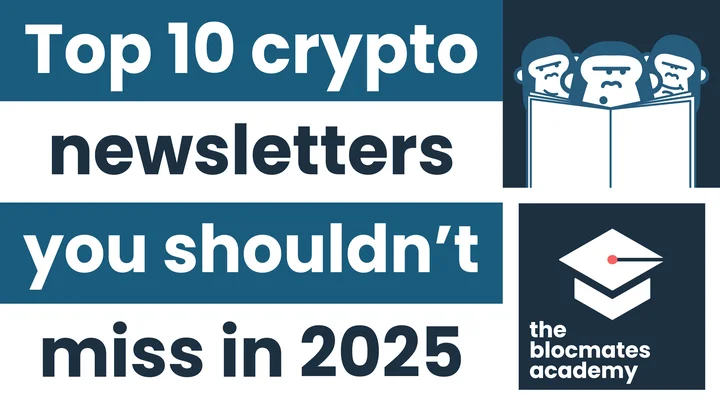










.webp)


.webp)









.webp)







.webp)




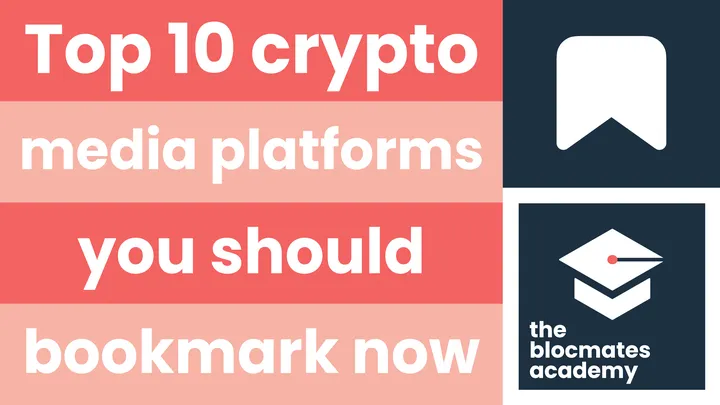











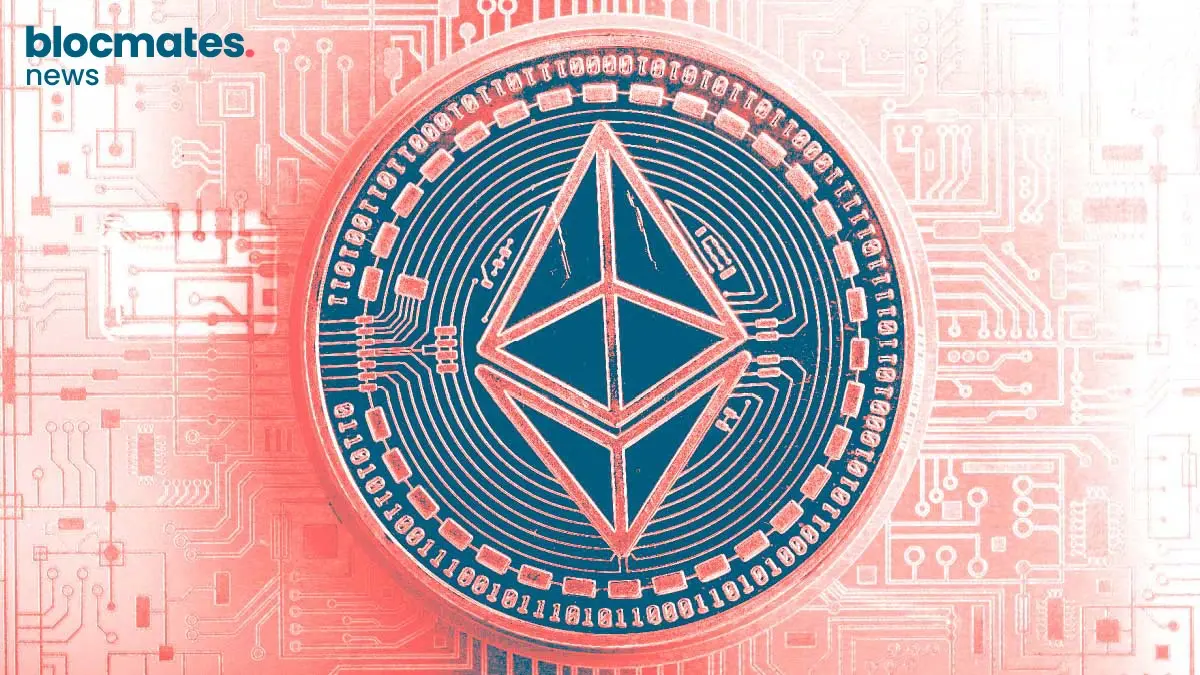
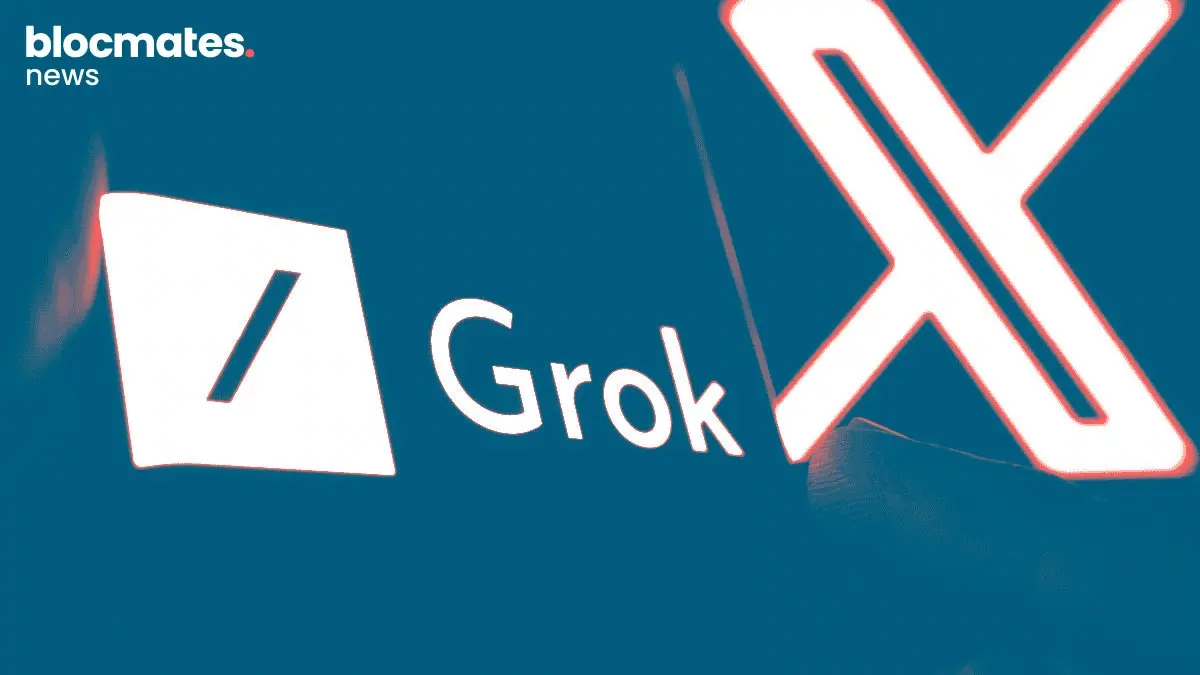


.webp)





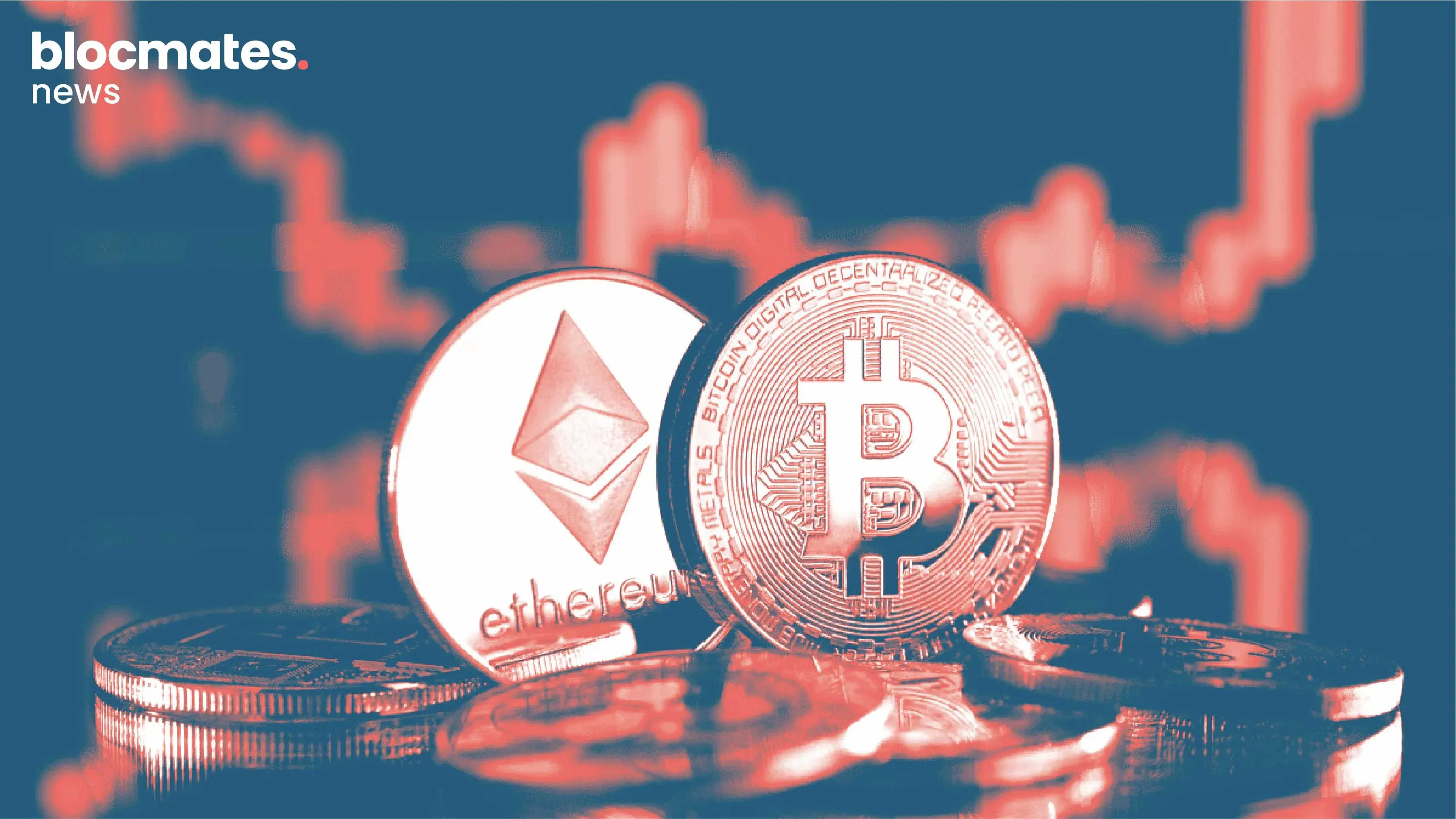

.webp)
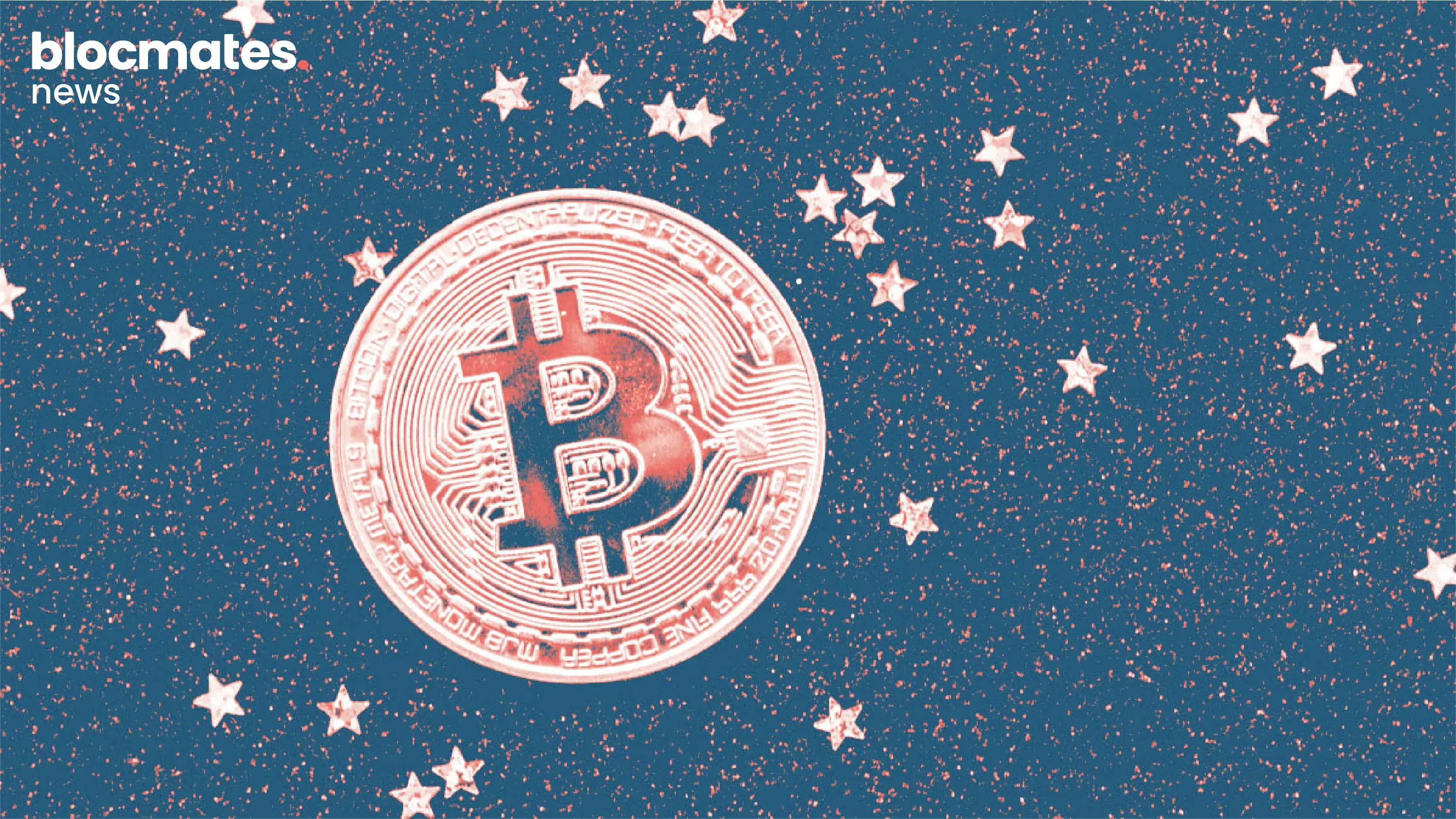






















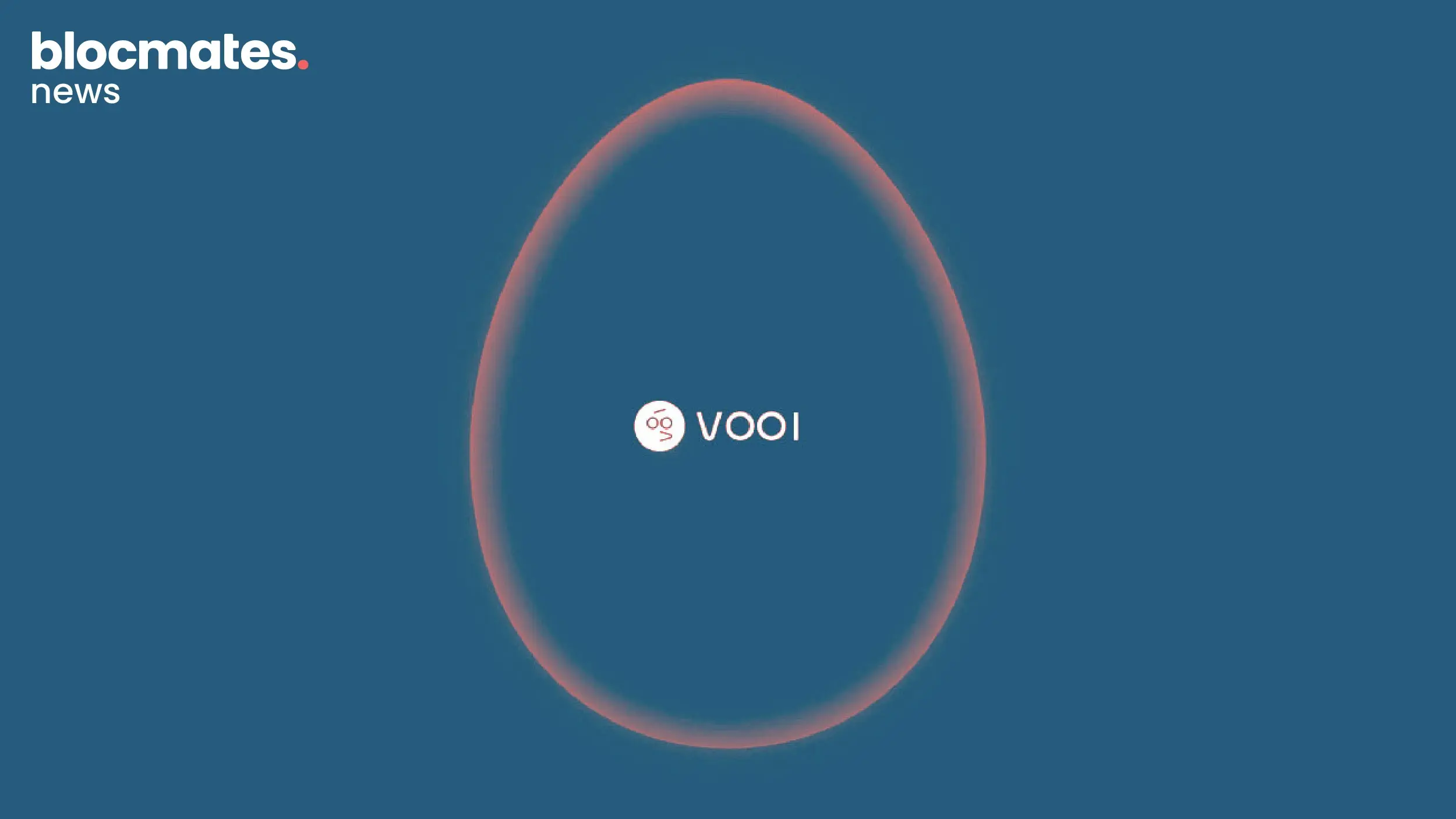
.webp)






.webp)




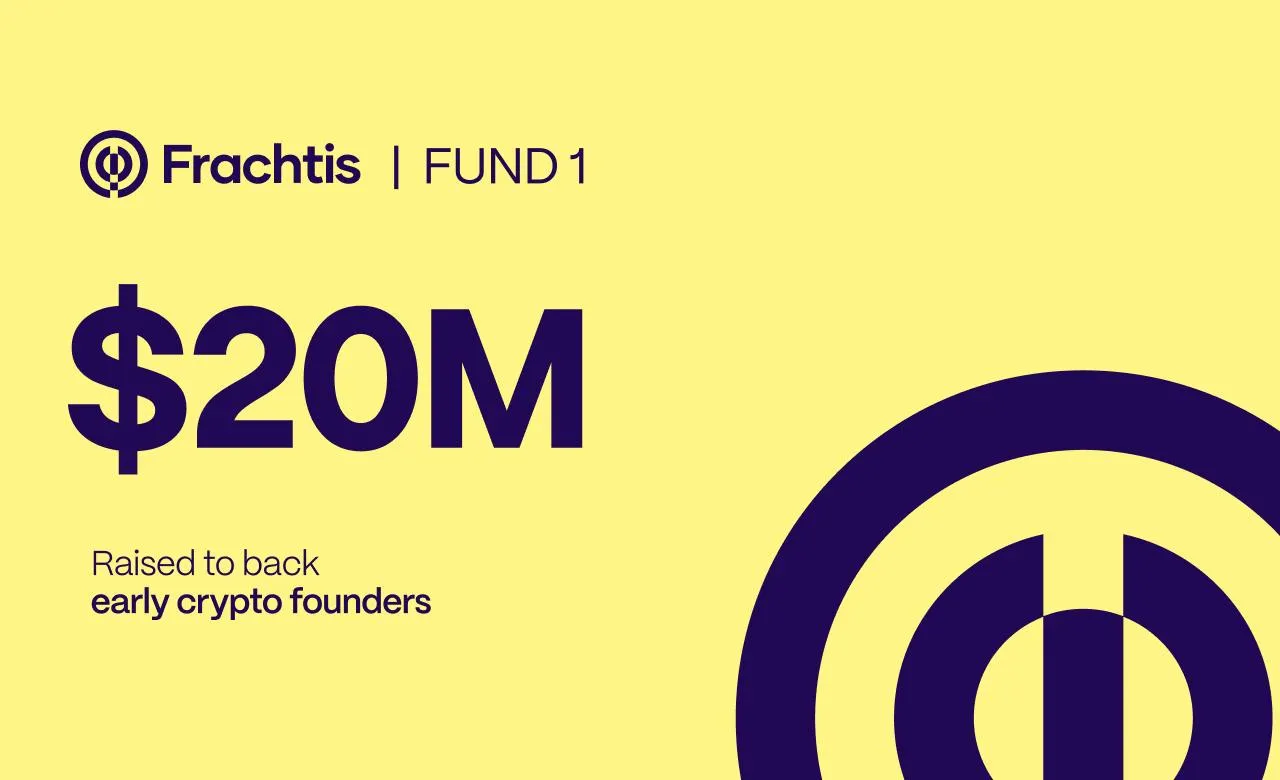





.webp)



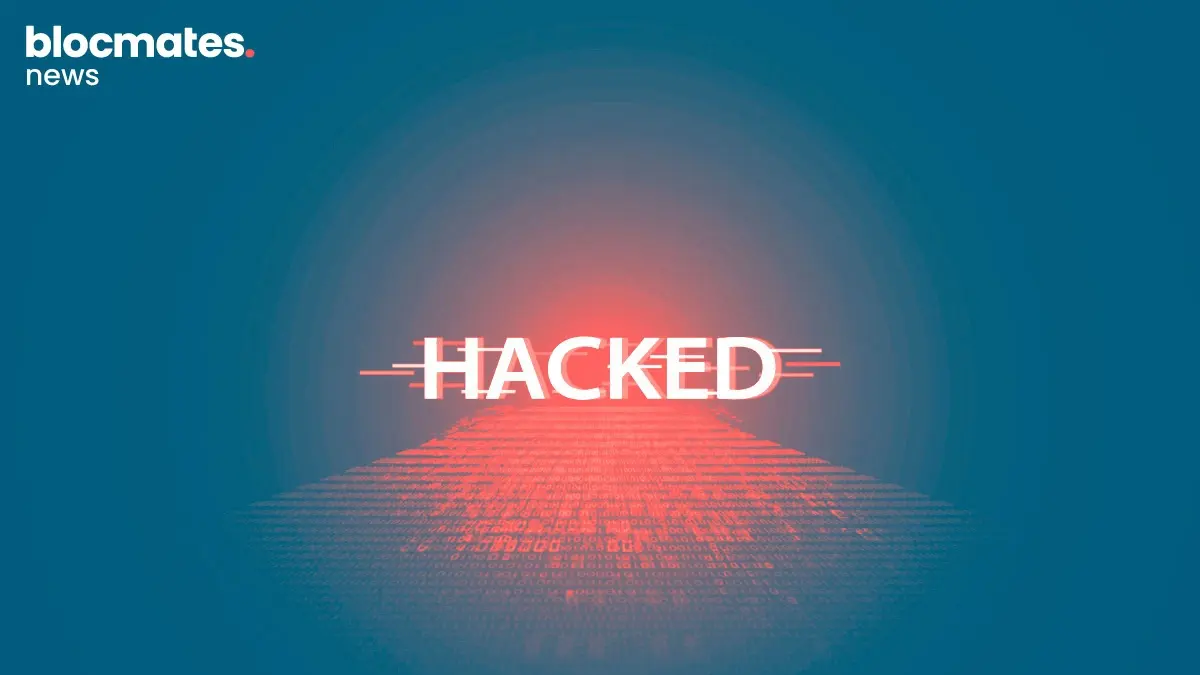




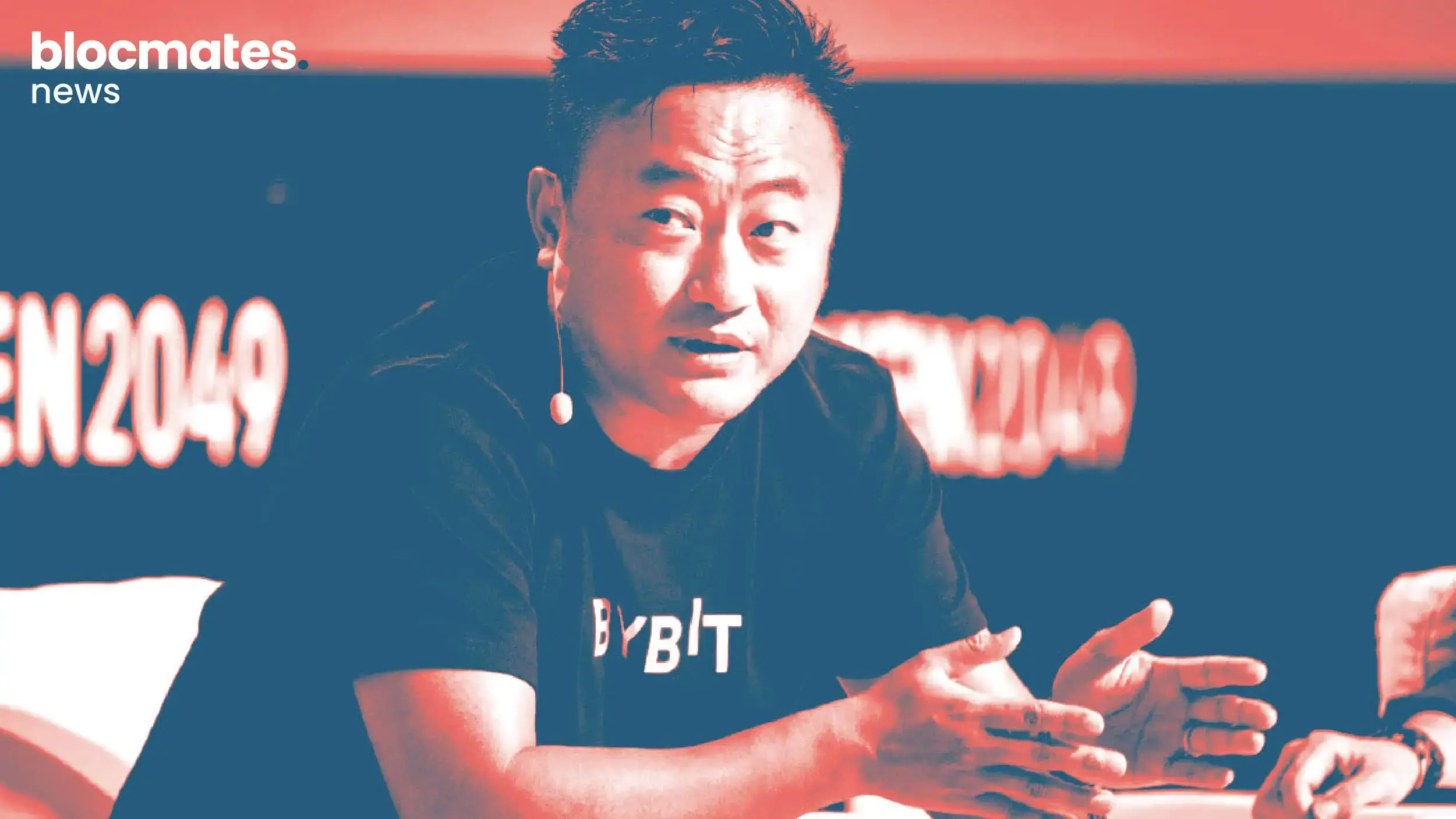
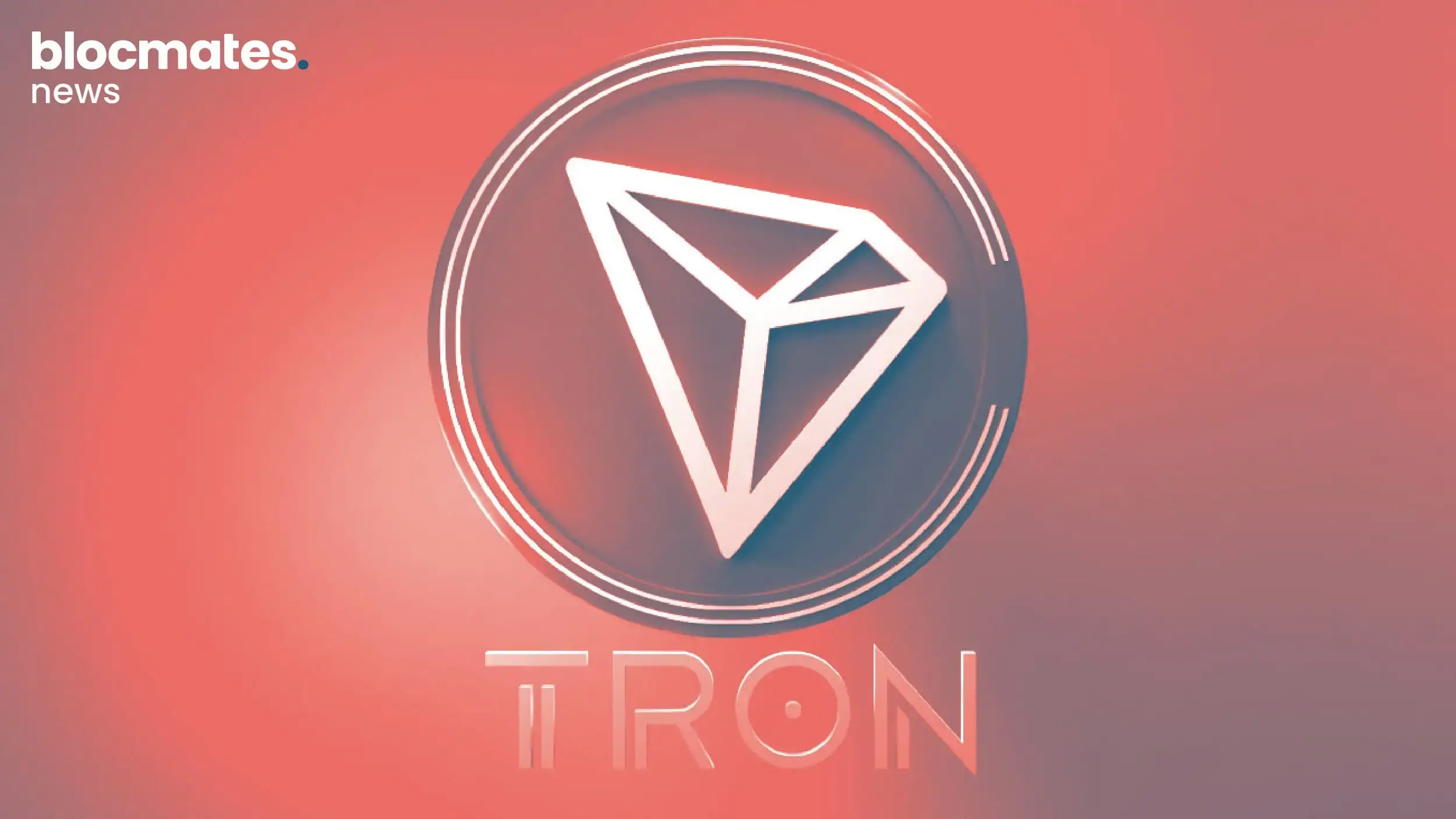
.webp)
.webp)
.webp)
.webp)
.webp)
.webp)

.webp)









.webp)

.webp)
.webp)
.webp)
